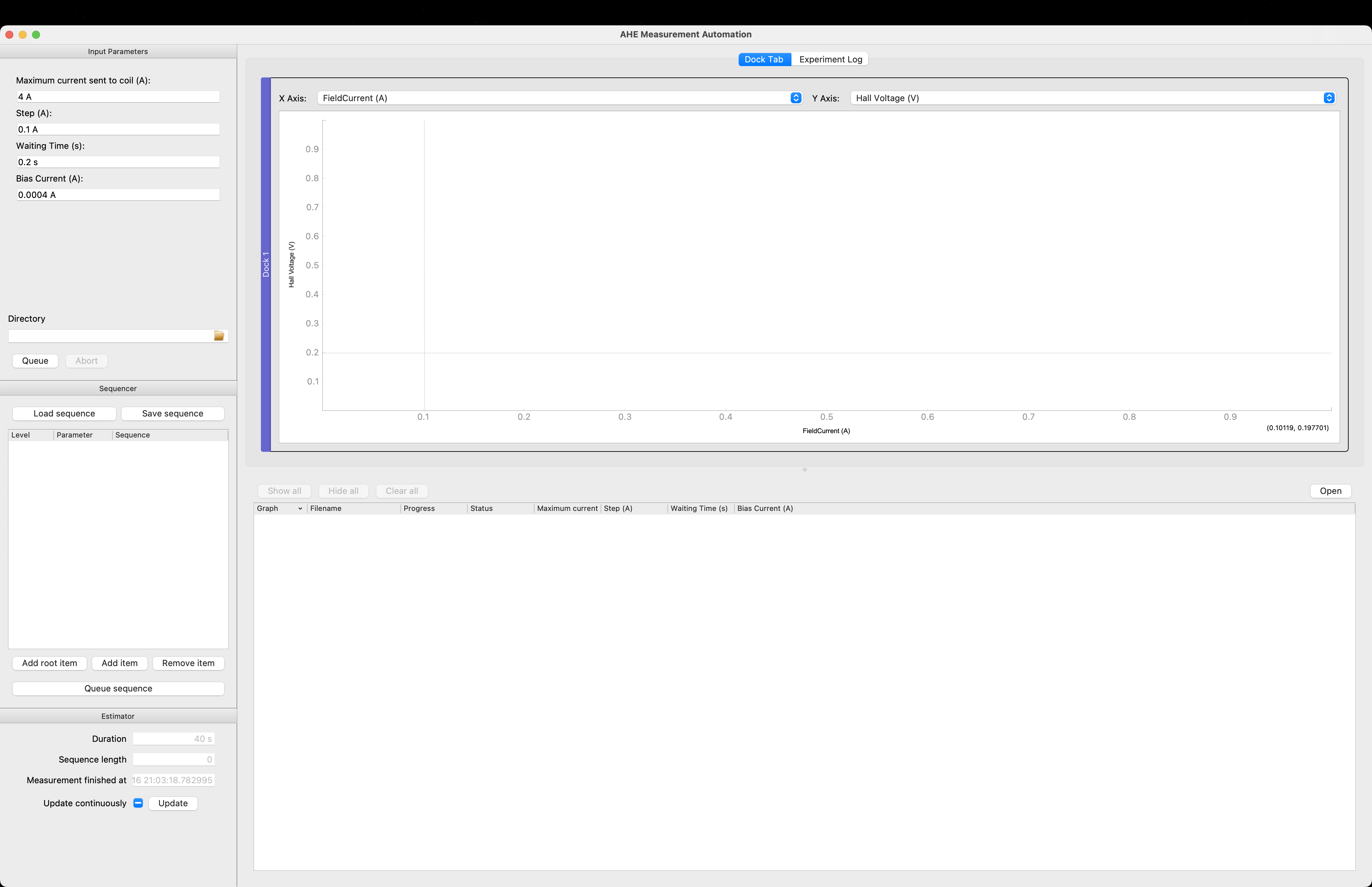AutoVA - Automated VCMA & AHE Measurement System
AutoVA - Automated VCMA/(magnetoelectric coupling) - Anomalous Hall effect Measurement System.
The software is used to control :
- The E-field applied for the VCMA/Magnetoelectric coupling. (with the ramping function).
- The E-fields can have multi-variants - (dwelling, pulser).
- The electromagnetic filed.
- The Soure Measure Unit (SMU) to apply one bias-current, and meanwhile measuring the Hall Voltage. Hysteresis loops can be obtained by looping the electromagnetic field.
The software has following features:
AutoVA_1.0.0
- Compatible with a large amount of SMUs, and instruments
- Experiments procudures visualised
- GUI for graphing live data
- managing queues of experiments.
- Data auto-generation
AutoVA_1.0.1
The automated experiment time can be estimated and updated in real time.
AutoVA_1.0.2
The progressbar for single meaurement will be shown













